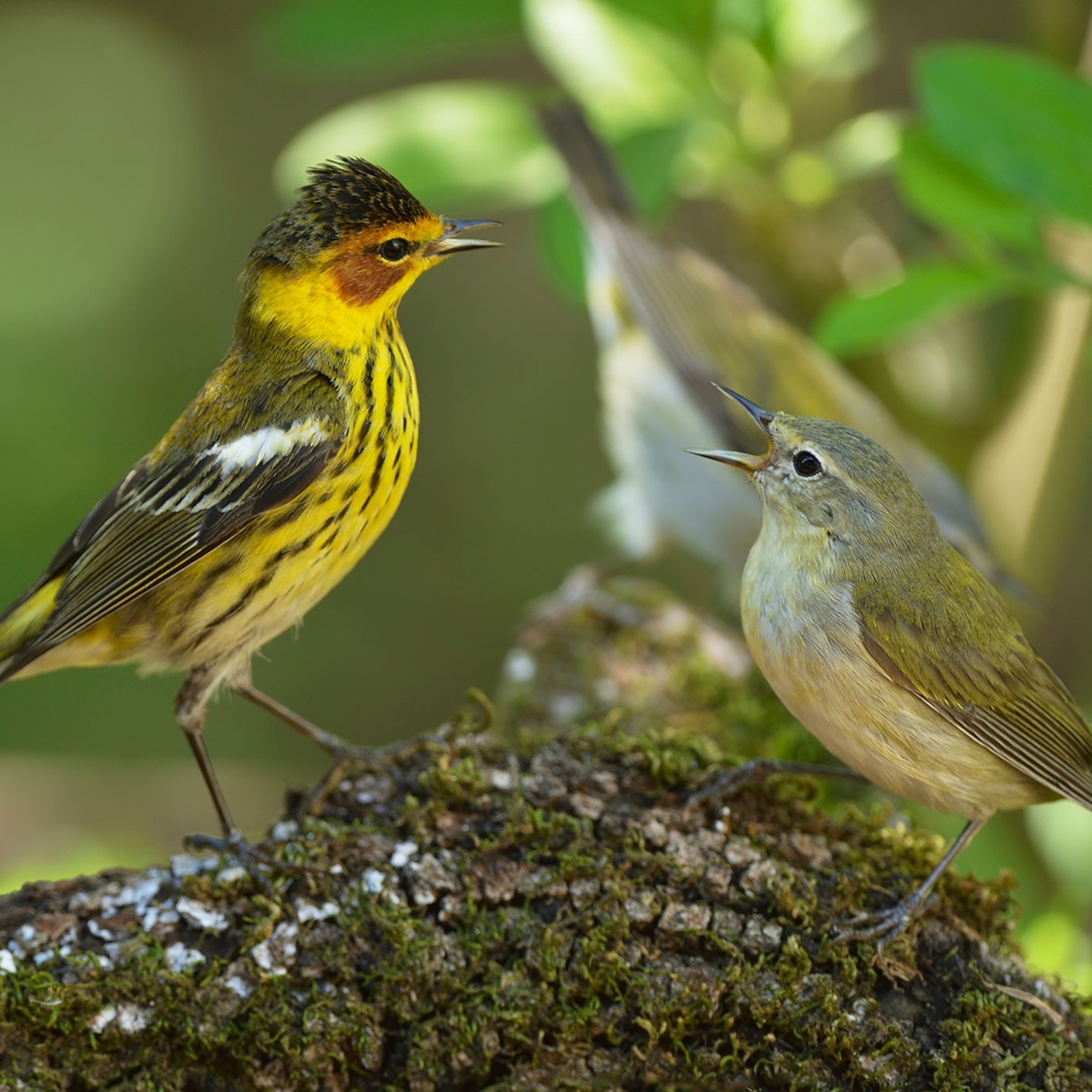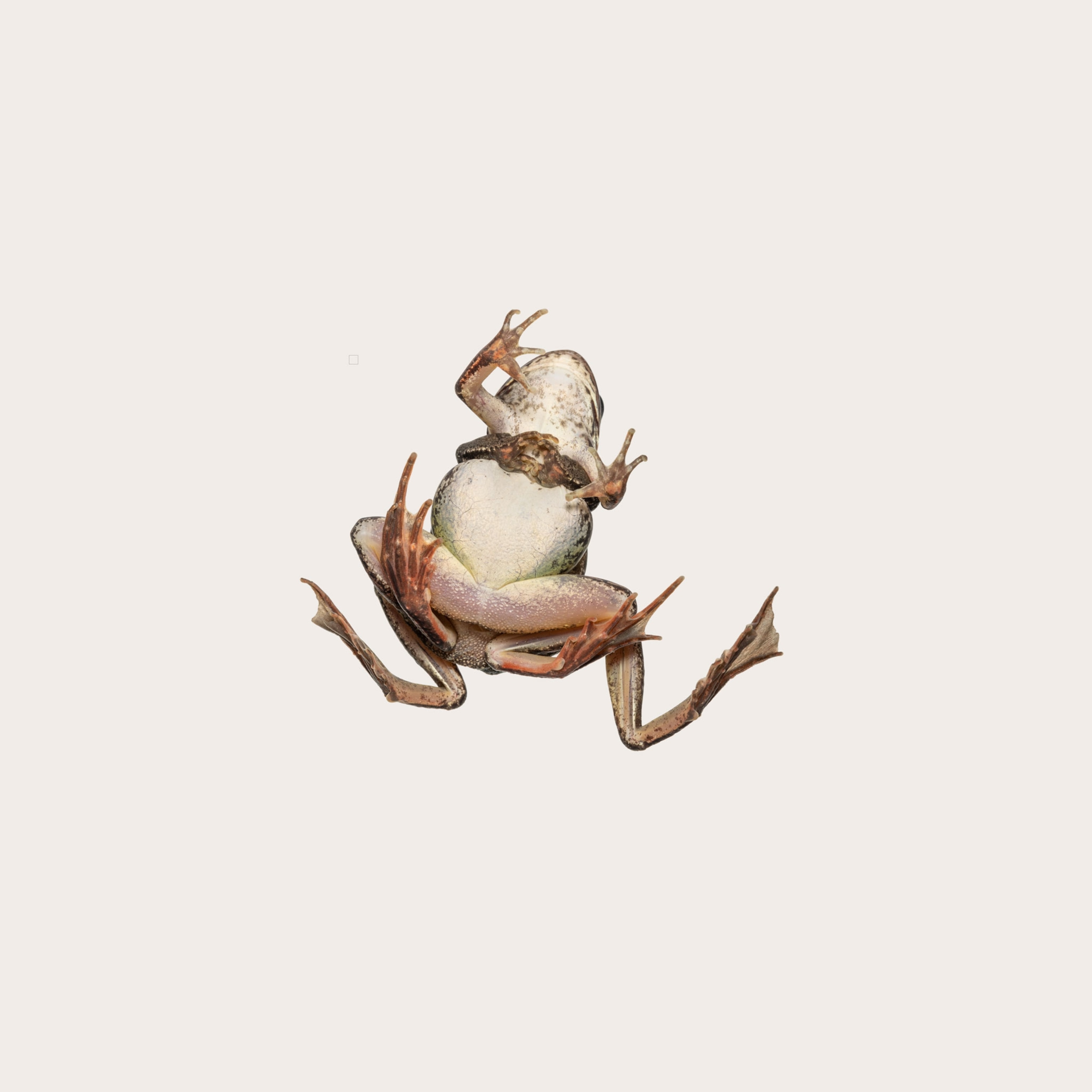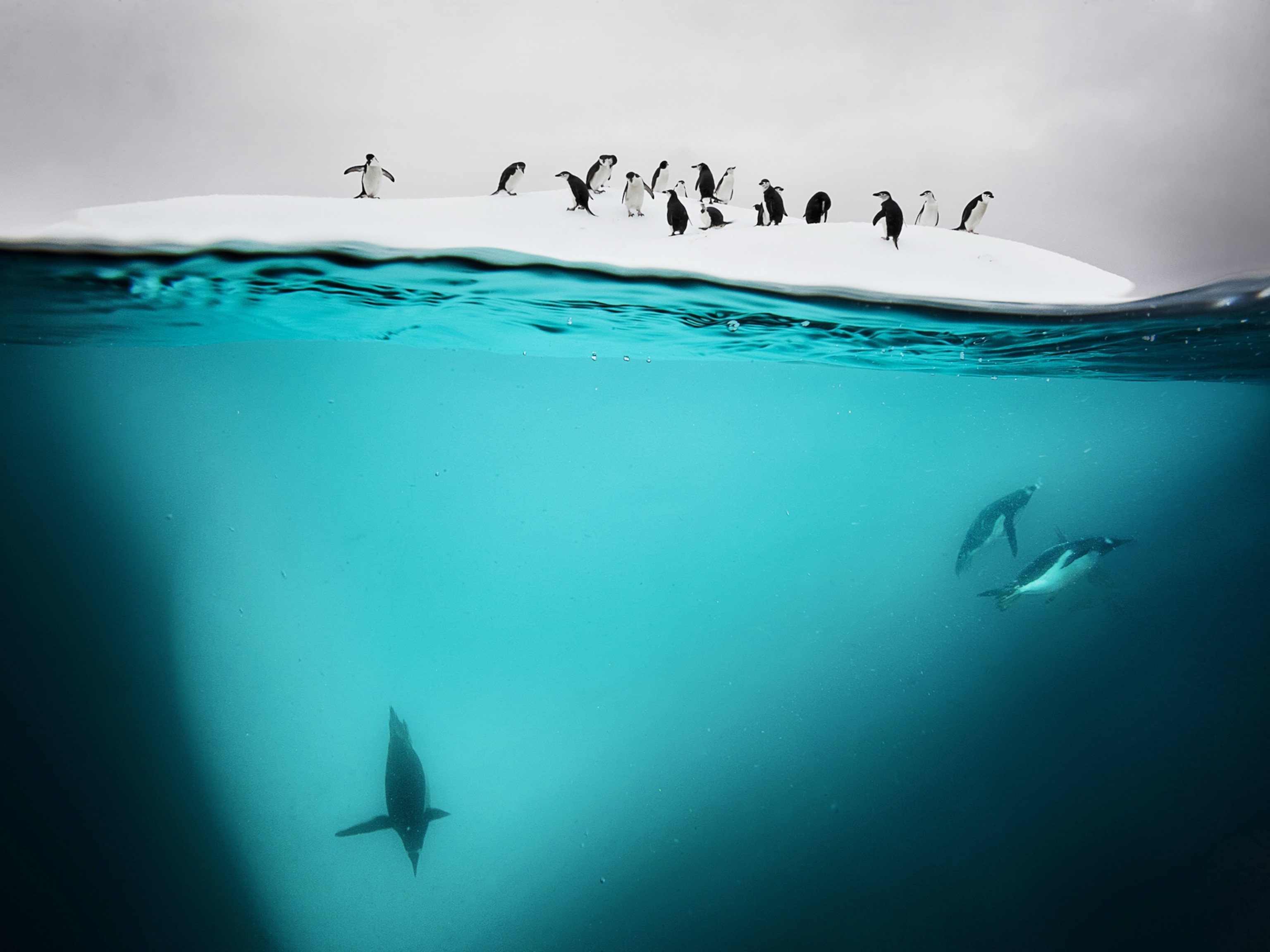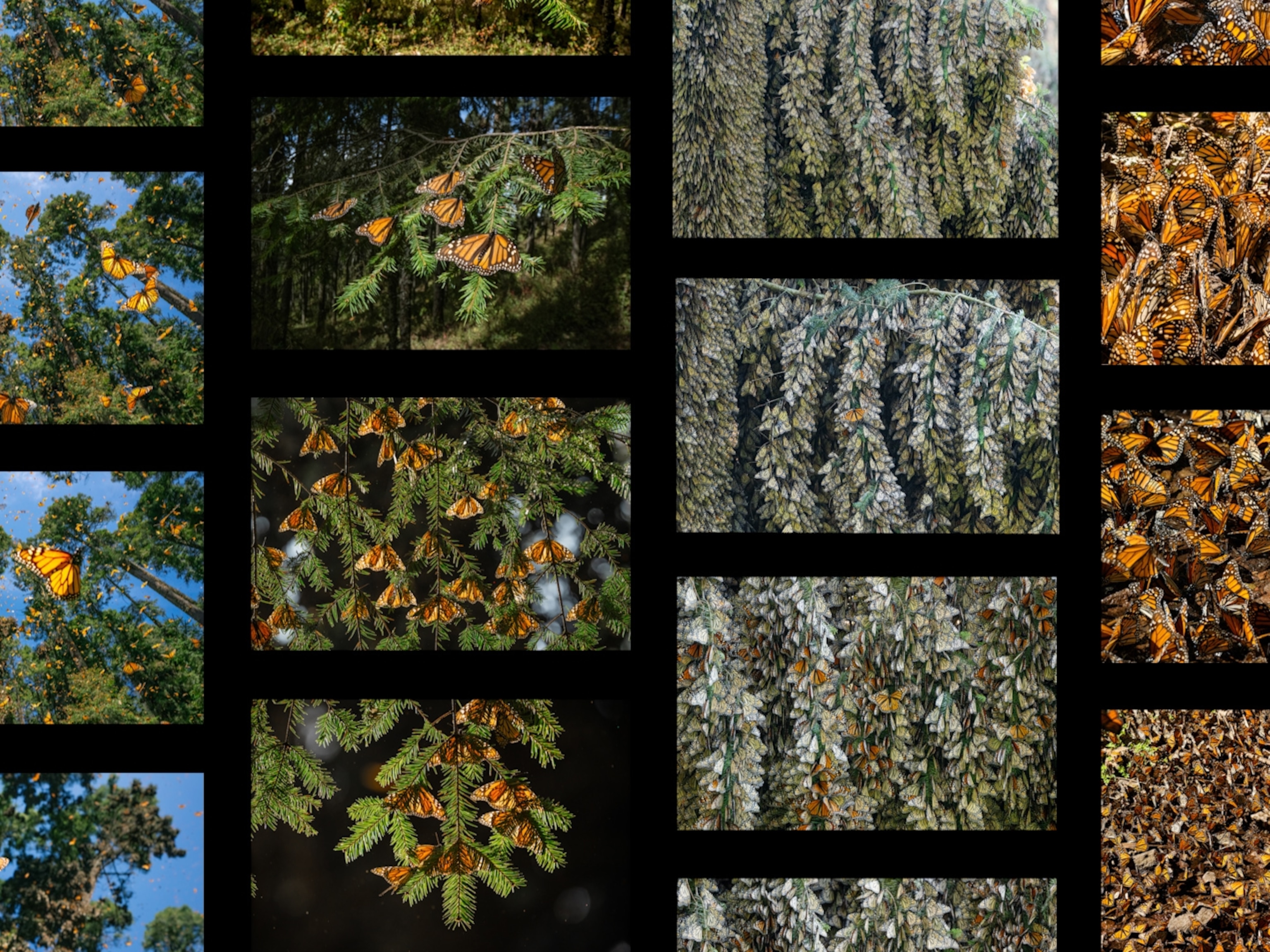Animal Migrations
What is it that makes animal migration such a magnificent spectacle for the eye and the mind? Is it the sheer abundance of wildlife in motion? Is it the steep odds to be overcome? Is it the amazing feats of precise navigation? The answer is all of the above. But there’s another reason why the long-distance journeys of wildebeests, sandhill cranes, monarch butterflies, sea turtles, and so many other species inspire our awe. One biologist has noted the “undistractibility” of migrating animals. A nonscientist, risking anthropomorphism, might say: Yes, they have a sense of larger purpose.
Animal migration is a phenomenon far grander and more patterned than animal movement. It represents collective travel with long-deferred rewards. It suggests premeditation and epic willfulness, codified as inherited instinct. A biologist named Hugh Dingle, striving to understand the essence, has identified five characteristics that apply, in varying degrees and combinations, to all migrations. They are prolonged movements that carry animals outside familiar habitats; they tend to be linear, not zigzaggy; they involve special behaviors of preparation (such as overfeeding) and arrival; they demand special allocations of energy. And one more: Migrating animals maintain a fervid attentiveness to the greater mission, which keeps them undistracted by temptations and undeterred by challenges that would turn other animals aside.
An arctic tern on its way from Tierra del Fuego to Alaska, for instance, will ignore a nice smelly herring offered from a bird-watcher's boat in Monterey Bay. Local gulls will dive voraciously for such handouts, while the tern flies on. Why? "Animal migrants do not respond to sensory inputs from resources that would readily elicit responses in other circumstances," is the dry, careful way Dingle describes it. In plainer words: These critters are hell-for-leather, flat-out just gonna get there.Another way, less scientific, would be to say that the arctic tern resists distraction because it is driven at that moment by an instinctive sense of something we humans find admirable: larger purpose.
The arctic tern senses that it can eat later. It can rest later. It can mate later. Right now its implacable focus is the journey; its undivided intent is arrival. Reaching some gravelly coastline in the Arctic, upon which other arctic terns have converged, will serve its larger purpose, as shaped by evolution: finding a place, a time, and a set of circumstances in which it can successfully hatch and rear offspring.
But the process is complex as well as various, and different biologists define it differently, depending in part on what sorts of animals they study. Joel Berger, of the Wildlife Conservation Society and the University of Montana, who works on the American pronghorn and other large terrestrial mammals, prefers what he calls a simple, practical definition suited to his beasts: "Movements from a seasonal home area away to another home area and back again." Generally the reason for such seasonal back-and-forth movement is to seek resources that aren't available within a single area year-round. But daily vertical movements by zooplankton in the ocean—upward by night to seek food, downward by day to escape predators—can also be considered migration. So can the movement of aphids when, having depleted the young leaves on one food plant, their offspring then fly onward to a different host plant, with no one aphid ever returning to where it started.
Dingle, an evolutionary biologist who studies insects, offers a more intricate definition than Berger's, citing those five features (persistence, linearity, undistractibility, special start-and-stop behaviors, stored energy) that distinguish migration from other forms of movement. For example, aphids will become sensitive to blue light (from the sky) when it's time for takeoff on their big journey and sensitive to yellow light (reflected from tender young leaves) when it's appropriate to land. Birds will fatten themselves with heavy feeding in advance of a long migrational flight. The value of his definition, Dingle argues, is that it focuses attention on what the phenomena of the wildebeests and the sandhill cranes share with the phenomenon of the aphids and therefore helps guide researchers toward understanding how evolution by natural selection has produced them all.
Rattlesnake migration on the Great Plains of western Canada is a peculiar but illuminating case. A young Canadian biologist named Dennis Jørgensen, now employed by the World Wildlife Fund, studied movements of the prairie rattlesnake (Crotalus viridis viridis) on the outskirts of Medicine Hat, Alberta, near the northern limit of its range, and found the snakes migrating ambitiously each spring and fall. The average round-trip by his animals was about 5 miles, though an earlier study detected Canadian rattlesnakes migrating as far as 33 miles. In Arizona, by contrast, rattlers don't travel nearly so far, because they don't have to. The driving logic of the Canadian migrations is related to cold winter temperatures (always difficult for reptiles) and the scarcity of really good den sites in which to survive hibernation.
"There aren't many dens that can support survival over winter on this landscape," Jørgensen told me. An ideal den must be deep underground, where the earth is warm, but accessible from the surface via burrows or natural fissures. Such refuges are few and far between. "Because of that, what you get is very large aggregations of snakes at these communal dens." Picture a serpentine tangle of a thousand snakes, piled together cozily, calm and sleek in their subterranean nook, jointly awaiting the signals of spring. When surface temperatures rise to a comfortable threshold, they emerge. For a while they bask in the sunlight, crowded like bronzed tourists on the Costa del Sol. But the rattlesnakes are hungry. What's their next imperative? To get away from one another, find food, and mate. So they migrate radially—in all possible directions away from the den—like starburst embers from a Fourth of July rocket.
Jørgensen used small radio transmitters, surgically implanted, to chart this pattern, tracking the individual routes of 28 different rattlesnakes during 2004 and 2005. More recently, on a blazing summer day, he took me back to one of the den sites, in a slumping bank above the South Saskatchewan River. The slumping had opened deep underground cracks in which roughly 60 prairie rattlers had wintered. From the riverbank we turned toward the uplands and began retracing the migration route of one of his animals, an ambitious female he had labeled E.
Not far upslope were three rounded boulders, lichen-covered, with a hole beneath. Snake E had arrived here on May 8, Jørgensen said; she rested, basked, and took off again on May 27. She ascended this steep bench (we started climbing) amid the sage and crumbling gray mud, then slithered back down the slope (we plunged after her), crossed this dirt road, crossed this moist gulch full of goldenrod and skunkbrush (we thrashed through), and climbed again. Back atop the bench, we ducked between strands of barbed wire into the corner of a crop field irrigated by center pivot. The crop had been alfalfa when E came through; this year, potatoes. We politely circumvented the spud field and picked up her track on the far side, between several more center-pivot circles, blooming bright yellow and rank with canola. The midday air, hot and thick, smelled like baked fish from an oven.
Having sprinted across two pivot fields in a single day, brave lady, E had then picked up the security of a fence line, where the weeds were dense and the discs of a tiller, the blades of a swather, never touched. By late June she was making 200 yards daily, still along the fence line, amid a hospitable jumble of rocks, weeds, and rodent burrows. At that point Jørgensen and I paused in the shade of a cottonwood to rest. We had covered eight weeks of rattlesnake migration in four hours and were drenched with sweat.
Hereabouts was where E had spent most of her summer that year, mating at least once and fattening herself on rodents for the homeward migration, another winter in the den, and pregnancy. It was productive habitat but also risky, Jørgensen said, what with all the agricultural machinery that could dice a snake like zucchini, all the farm-road traffic that could flatten her like an alligator belt. The changes that had come to this landscape did not favor long-distance rattlesnake migration. At that moment, as though to embody those changes within one human memory, a man named Aldo Pederzolli pulled up on his four-wheeler.
Pederzolli was the farmer on whose land we stood and who had genially welcomed Jørgensen's study. He wore a black polo shirt, rubber boots, and a cap that read "Cee-Gee Earthmoving." He was a fit-looking man of 80, with squinty brown eyes, a high voice, a sun-ripened Canadian smile. Introduced to me, hearing the reason for my visit, he said, "Oh, I just love rattlers." This wasn't irony. Got enough good snakes, he added, and you don't need to worry about gophers. Back when he was young, Pederzolli recalled, he would see nice fat old rattlers, that big around, when he seeded a fallow field. Don't see such big ones anymore. There was a den near the river, he said wistfully, and they'd migrate six miles up to a nice patch of open prairie full of gophers. Not anymore.
Although it's only a hypothesis, Dennis Jørgensen suspects that natural selection—in this case, the death of the venturesome—may be turning his migrating rattlesnakes into a population of stay-at-homes.
Biological diversity entails more than a gross tally of species. Diversity of ecosystems, behaviors, and processes are important too, contributing richness and beauty, robustness and flexibility and interconnectedness to the living communities on Earth. To lose the long-distance migrations performed by some species would be a grievous diminution. Joel Berger has made this point in the journal Conservation Biology and elsewhere, with reference to migrating species around the world and one creature close to home: the pronghorn(Antilocapra americana), North America's only endemic species of ungulate.
Loose talk sometimes mistakes the pronghorn for an antelope, but in fact it belongs to a family all its own. Its extreme speed (fastest land mammal of the New World), more than necessary to evade any living North American predator, probably reflects adaptation for escaping the now extinct American cheetah of the Pleistocene. Besides traveling fast, though, the pronghorn also travels far. One population migrates hundreds of miles across the Great Plains from north-central Montana into southern Saskatchewan and Alberta. Another population follows a narrow, tenuous route from its summer range in Grand Teton National Park, across a divide at the headwaters of the Gros Ventre River, and down onto the plains south of Pinedale, Wyoming, in the Green River Basin. There the pronghorn mingle with thousands of others arrived from other parts of Wyoming, where they try to distance themselves from the natural gas wellheads and drilling teams, and wait out the frozen months, feeding mainly on sagebrush blown clear of snow.
The Grand Teton pronghorn are notable for the invariance of their migration path and the severity of its constriction at three critical spots, known as Trappers Point, the Red Hills, and the Funnel. Field research by Berger and colleagues has charted that path and illuminated its jeopardies. If the pronghorn can't pass through each of the three bottlenecks during their spring migration, they can't reach their bounty of summer grazing in Grand Teton National Park; if they can't pass through again in autumn, escaping south onto those windblown plains, they'll likely die trying to overwinter in the Jackson Hole area or get fatally stuck in the deep snows of the divide. On a bright day in November, in company with a biologist named Renee Seidler, I went for a look at the details of their dilemma.
Seidler, also employed by the Wildlife Conservation Society, works mostly on habitat issues in the booming gas fields between Pinedale and Rock Springs, an area that supports perhaps 20,000 pronghorn each winter. The northward migrants constitute just a fraction of that total but are special, she noted, because without them, one of America's great western parks, Grand Teton, would entirely lack one of America's great western species. On a knoll at Trappers Point, we read the historical marker about fur trappers and Nez Perce and Crow peoples gathering here to trade and gazed down at the modern manifestations of growth and commerce alongside Highway 191: a sprawling little community known as Cora Junction. There were about 50 houses, trailers, and other buildings, including a Jehovah's Witnesses meeting hall, all nested within a grid of streets and lanes, fenced yards, dogs, chickens, real estate signs, old tires, boats on trailers, a weathered trampoline, and a rusting green Chrysler from the 1940s. Right about here, Seidler said, pointing to a gap of sage between our knoll and the houses, is where most of the pronghorn seem to cross through.
We drove north on a county road about 20 miles, along willowy bottomlands of the upper Green River, tracing the migration route. Pronghorn, dependent on distance vision and speed to keep safe from predators, do not like willowy bottomlands, Seidler explained. They don't like dense forest either, so they traverse these high, open shoulders between the river and the woods, where they can see and run. Then we came to a place where forested hills rose on both sides of the river to form a soft V, leaving a corridor of open ground only about 150 yards wide. "That's the Funnel," Seidler said. It was private land, dissected by the driveways, the buck-and-rail fences, the arched gateways of people wealthy enough to have a second home, or a third, on the headwaters of the Green. On this day, in the off-season, there was no sign of anyone around.
One more yard fence, one more house, one or two large barking dogs, could make a bad difference. As at Trappers Point so here at the Funnel; incremental human activities are accumulating toward a crisis for Grand Teton's pronghorn—threatening to choke off their passageway.
Conservation scientists such as Berger, along with some biologists and land managers within the National Park Service and other agencies, are now working to preserve migrational behaviors, not just species and habitats. The Bridger-Teton National Forest has recognized the path of the Grand Teton pronghorn, much of which passes across national forest land, as the first federally protected migration corridor. But neither the Forest Service nor the Park Service can control what happens on private land at a bottleneck, nor on Bureau of Land Management parcels within the drilling fields south of Pinedale. And with certain other migrating species, the challenge is complicated further—by vastly greater distances traversed, more jurisdictions, more borders, more dangers along the way.
Imagine, for instance, that you're a lesser sandhill crane (Grus canadensis canadensis), setting off on your spring migration from southwestern Texas. You might have to fly across a corner of New Mexico and Oklahoma, then Kansas, Nebraska, South Dakota, North Dakota (most of which allow hunting of sandhills), then over the Canadian border into Saskatchewan, angling northwest across Alberta and British Columbia, across Yukon Territory, then the breadth of Alaska, and finally across the Bering Strait to your summer breeding grounds in northeastern Russia. This would be a trip of roughly 5,000 miles. Needing to pause somewhere and replenish yourself, you would probably stop on the Platte River in Nebraska, near the town of Kearney. If so, you’d have company. About 500,000 northbound sandhills make the same stopover every year.
There they linger for two or three weeks, maybe four. Some depart onward as others arrive, keeping the average crane count during March and April at around 300,000. By night they roost in the gently flowing shallows of the Platte, shin-deep in cool water, or else on sandbars, giving them warning against any predator that might come splashing out. Each morning they rise up in vast, graceful waves and fly to fields nearby, where they spend their days assiduously feeding on waste corn the harvesters missed and earthworms and other invertebrates. Such a stopover period is no exception to the undistractibility of migrating animals, as defined by Hugh Dingle; it's a part of the whole program, repeated by generations of cranes. During this stopover, a six-pound lesser sandhill adds about a pound and a half of fat to its weight. (The greater sandhill, another subspecies also present on the Platte, is larger.) The birds need that fat between Nebraska and Russia. Therefore, they need the stopover habitat—the shallows, the sandbars, the security, the corn and invertebrates—to complete their arduous yearly cycle.
I stood overlooking that habitat, on a morning in late March, and watched wave after wave of cranes rise from the river. Each group climbed clumsily off the water, gained elegance as their wings caught more air, turned in formation, and flew out to their daily feeding. Meanwhile, they called to one another in their distinctive, creaky trill. There were maybe 60,000 sandhills just within the sweep of my binoculars. It was a spectacle of extraordinary abundance, a reminder of what America looked like back when John James Audubon stared up at sky-clogging flocks of passenger pigeons, when George Catlin saw the thunderous migrations of bison.
I had watched fly-in of the cranes too, on an earlier evening, when they arrived back through the twilight and settled onto their shoals for the night. But I found fly-out more deeply affecting—because, I suppose, the birds at daybreak are headed off with a purpose, not just home to rest. They would fatten themselves for another long leg of their journey. Their travel would take them to safe and bountiful breeding grounds. Their prodigious efforts, their resistance to distraction, would yield new cohorts of sandhill cranes, extending and rejuvenating the species. I almost wrote "perpetuating the species," but no, we can't be sure of that. Nothing alive is perpetual.
It was the accrued wisdom and resoluteness of evolution that I was witnessing, airborne above the Platte. If we humans have accrued equal wisdom and can summon equal resoluteness, I thought, maybe we'll allow them to continue their journeying a while longer.
































